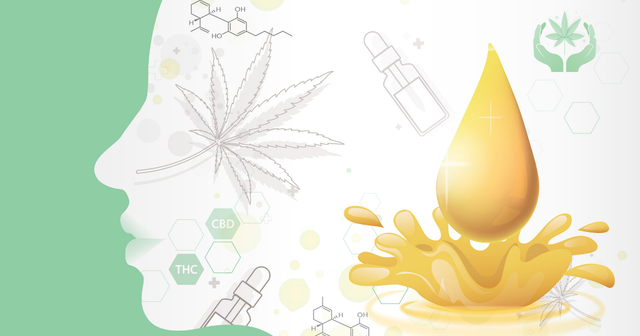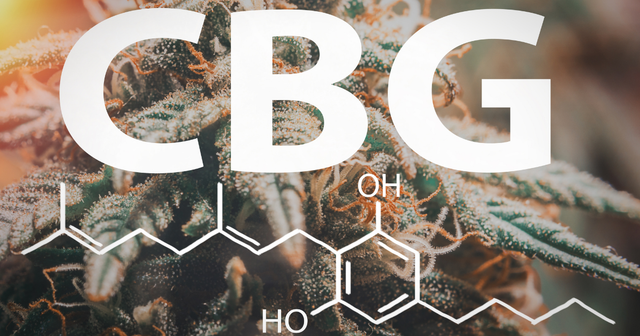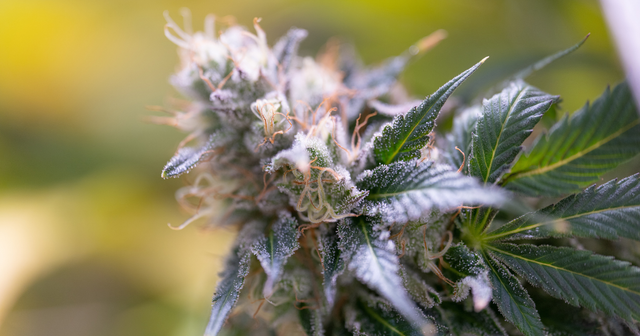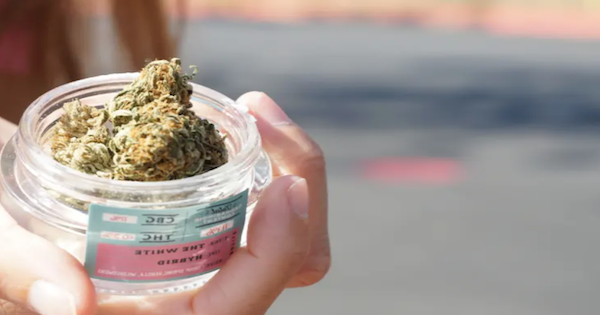How to Shop for 4/20 Without Focusing on THC
THC percentage is only one piece of the puzzle in the search for a potent strain. If a high THC percentage doesn't equate to high-quality ganja, what can we look out for when shopping for cannabis? Written by Anna Barberena.
While the quality and potency of cannabis continues to improve, there is no industry standard for categorizing the quality of cannabis. Lab tests provide us information on the cannabinoid and terpene profiles, as well as making sure there are no contaminants in the weed, but they do not tell us anything about its quality.
The two details most people keep in mind when they’re in a dispensary shopping for flower are THC percentage and strain names. With the lack of education that has dominated the industry for years, most consumers have little else to go on other than how the flower is branded and how the dispensary staff presents and sells the product. Without any other parameters to focus on, consumers use THC percentage as the central focus point from which all the decisions are made when purchasing flower.
THC Percentage Doesn't Equate to High-Quality Cannabis
Understandably, we want the best bang for our buck when we’re shopping for weed. Shopping for a strain that’s high in THC but a little over budget is worth it to most folks with the assumption that the high THC percentage will make a little bit go a long way. However, the falsehood of THC percentage being the main factor in potency and effect greatly limits our ability to deepen our understanding of the plant and how it affects us on a personal level.
THC percentage is only one piece of the puzzle in the search for a potent strain and unfortunately, strain names don’t tell us anything about its quality, potency, or effects. Don’t mistake THC percentage as an indication of potency or overall quality because while it is a factor in potency, it is not the only component that ultimately adds up to a truly potent experience.
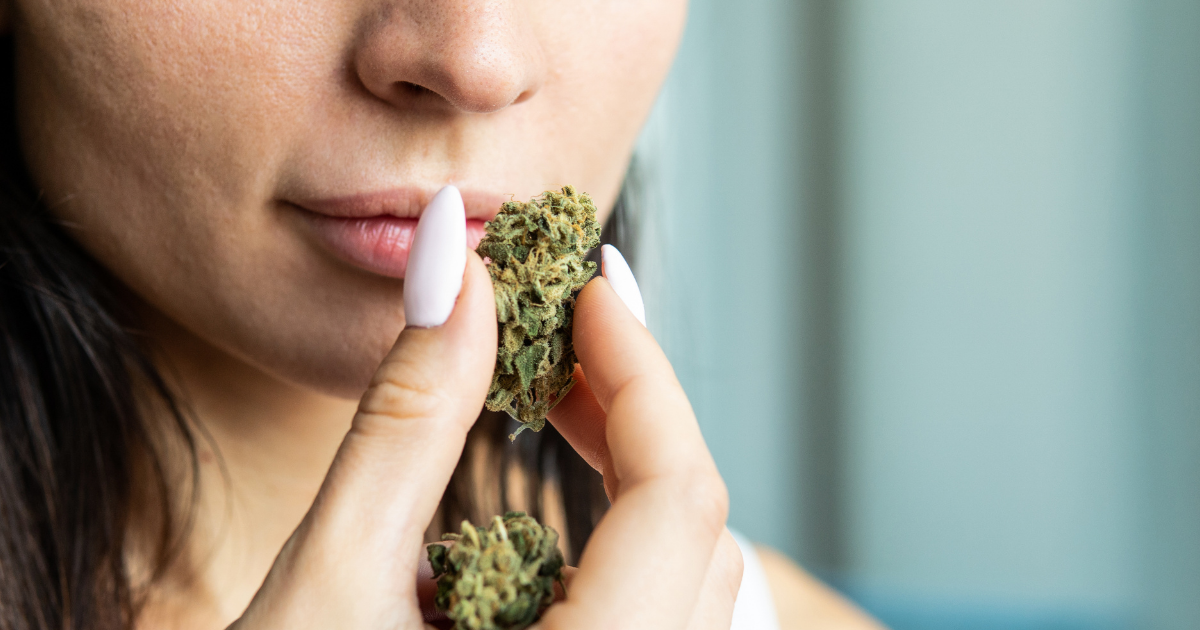
If a high THC percentage doesn't equate to high-quality ganja, what can we look out for when shopping for cannabis?
When evaluating the quality of the flower, three of the biggest points to focus on are visual appearance, aroma strength, and packaging date.
Visual Appearance
What does the weed look like and what response does it elicit in you?
You know when you meet someone and you feel instantly connected with them? This is the kind of experience you should be looking for when you’re shopping in a dispensary. If something looks vibrant and enticing to you, follow your instincts and give it a try. Your brain and body are telling you something that your rational mind may not be able to comprehend! If you’re not racing to go home and crack open that jar, keep shopping.
How well has the flower been trimmed?
Trimming is the process of removing sugar leaves that grow between the flowers. High-quality buds generally have no trim left on them. It is not to say that trim being left on the bud is harmful in any way but it can affect the overall flavor and smoothness of the flower. On the other hand, if the bud looks manicured to perfection or has a strange shape, it may mean it has been overly trimmed or machine trimmed. Over-handling the buds may lead to trichomes being damaged, which decreases potency and overall effects.
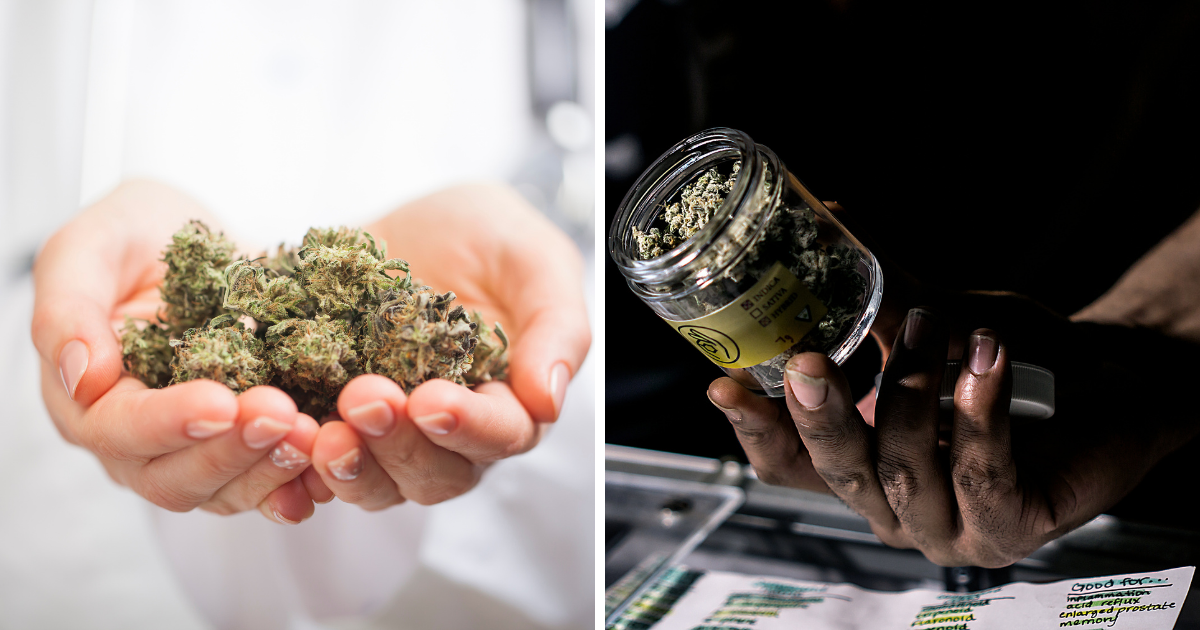
What does the trichome ripeness and density look like?
Trichomes are the structures on the cannabis plant that house cannabinoids and terpenes which ultimately determine potency and effect. As trichomes mature they go from clear (premature) to milky (mature), and amber (overripe). High-quality flowers are densely packed with milky trichomes rather than clear or amber trichome heads. If there are a lot of clear heads, it may mean the flower was harvested too early. On the contrary, a majority of amber heads means the flower may have been harvested too late. To maximize the potential of potency, look out for different trichome heads that are intact and fully matured.
Aroma
How potent is the aroma of the flower?
There are thousands of different terpene combinations which can occur, even within one strain name, that will impart the flower with a different smell. Terpenes are the molecules that give cannabis its variety of smells and flavors. They also interact with cannabinoids, and the synergistic properties these compounds produce are what drives the wide variety of effects we feel from cannabis.
When discerning the aroma of a flower, go with what makes you feel the most exhilarated! What subtle reaction happened in your body when the scent hit your nose? What thoughts come to mind when you take a whiff from that jar? Pungency is a key component to keep in mind as you are sniffing around. An aroma that is barely noticeable will elicit a completely different response than one that jumps out of the jar to smack you in the face. You are looking for a flower that has a heady scent since that will correlate with the concentration of terpenes present.
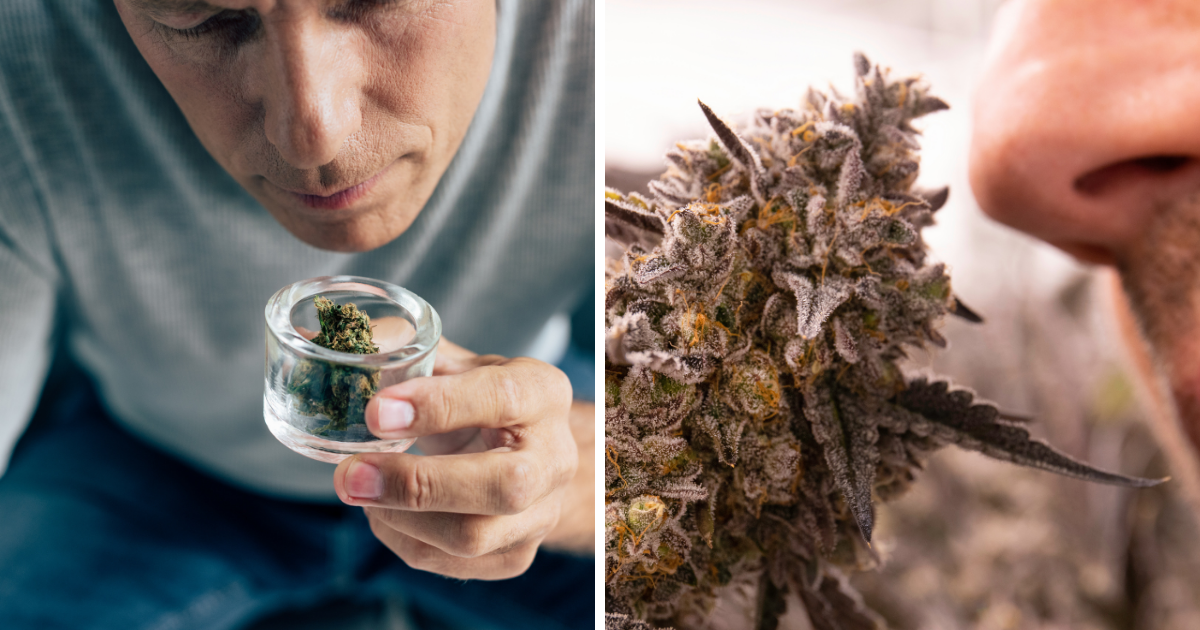
If you are unable to smell the flower, ask for the certificate of analysis or the C.O.A. Most lab tests include a terpene profile which will allow you to identify the dominant terpenes in a cultivar along with their concentrations. The majority of cannabis flower samples will have about 1.5-2% terpene content by volume. If you find a flower with more than a 2.0% terpene content, there is a very high chance that the increased amount of terpenes will evoke a higher prevalence of the entourage effect, offering you a more intense experience.
Packaging Date
When was the flower packaged?
Cannabis does not age well. Cannabinoids transform into different compounds over time and terpenes readily evaporate into their environment. The longer these compounds stay in a jar, even if it was perfectly packaged and paired with a humidity packet, the longer they have to transform or degrade and lose their potency.
If a 6-month-old jar tests at 31% THC, the amount of time it has been on the shelf has likely reduced the concentration of THC and allowed terpenes to evaporate into the air in the jar. Getting a cultivar that is less than a month old that tests at 25% will likely give you a better high than a 6-month-old jar.
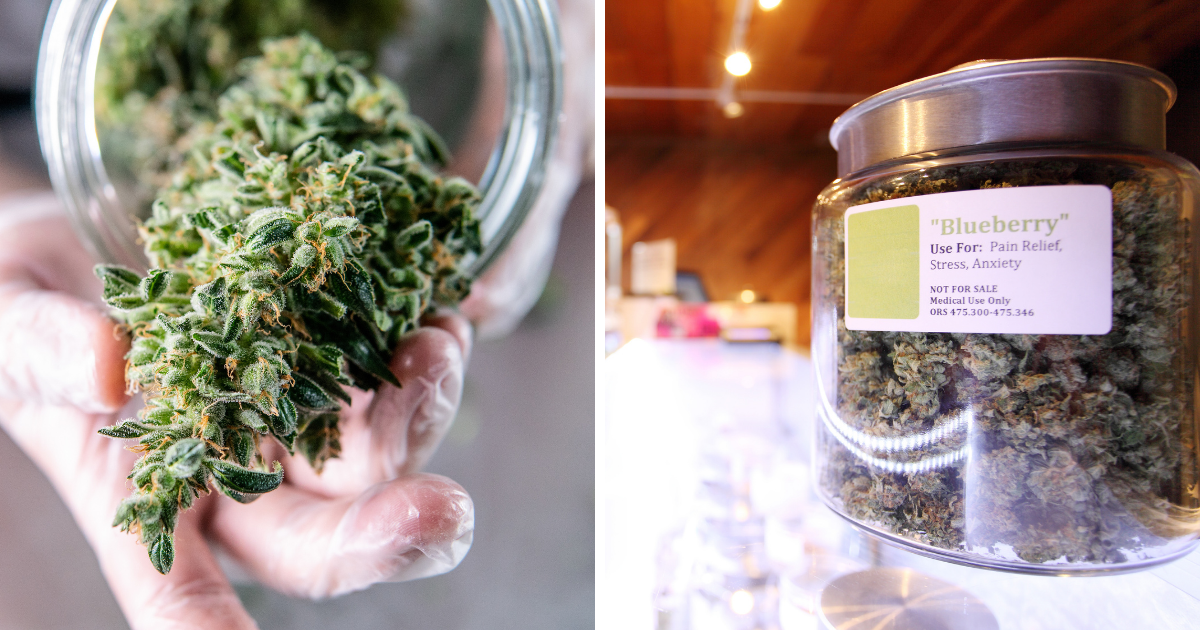
Talk to Your Concierge
Talk with your concierge and find out what cultivars have just arrived. If you focus on what is fresh without giving attention to the strain name or THC percentage, it’s almost a guarantee that you will find something that speaks to you.
A lot of companies now include the harvest date and packaging date of the flower directly on the label which gives you an idea of how old that flower is. If the harvest date isn’t available, check for a QR code on the packaging label. Certain companies will have a QR code that will bring you to lab tests and harvest dates specific to that product.

Keep an eye out for the visual signs of aged cannabis. As the buds get older and begin to dry out, the flowers will lose their vibrant green colors and the hair-like structures. These are known as stigmas, and they will begin to wither and break off. If the flower looks brown, tan, or lackluster green and generally feels as though its vitality has left it, you are looking at some old weed.
Sign up for a Free 1-on-1 Cannabis Consultation
Schedule a remote consultation with March and Ash's Head of Education, Anna Barberena, and navigate through the world of cannabis by discussing the right products or strains for your individual needs ✅
To schedule your free consultation, fill out the form by clicking the button below.

DISCLAIMER: THIS SITE DOES NOT PROVIDE MEDICAL ADVICE.
All information, including but not limited to, text, graphics, images and other materials contained on this site are for informational purposes only. No text, graphics, images or other materials on this site are intended to be professional medical advice or a substitute for professional medical advice, diagnosis or treatment. Always seek the advice of your physician or other qualified health care provider with any questions you may have regarding a medical condition or treatment and before undertaking a new health care regimen, and never disregard professional medical advice or delay in seeking professional medical advice because of something you have viewed on this site.